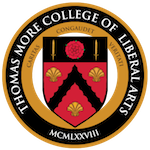Among truisms, one of the more contestable is that opposites attract. What is true, say, of magnetic poles is not a universal in human relations. A fair woman may attract an ugly man; the ugly man does not necessarily therefore attract a fair woman. What is far more often true is that opposites are similar. Otherwise, there would be little point in remarking their differences. Aristotle made a name for himself by pointing this out.
Take the case of the monstrous Fuhrer. In studying his career, we cannot help but be struck by the difference between Adolf Hitler and Louisa May Alcott. Mein Kampf is antithetical in every way to Little Women. But both authors died at the age of fifty-six, and so did Abraham Lincoln. Yet, if Herr Hitler had given an address at Gettysburg, it would have been longer and different in tone; and Miss Alcott’s Gettysburg Address would have been sympathetic, but not so lapidary. Oddly, too, Hitler and Queen Elizabeth II were born, in different years, on April 21—a circumstance that should challenge the horoscope people.
At the end of a play in which Sarah Bernhardt played the role of Cleopatra, Max Beerbohm overheard two matrons commenting on the dissimilarity between the home life of the queen of Egypt and Queen Victoria. Both queens knew inconsolable grief, but Victoria never ran through the corridors of Windsor with an asp on her bosom. Two men might have remarked a similar contrast between Mark Antony and Prince Albert. The domestic arrangements of Antony in Alexandria were very unlike those of Albert on the Isle of Wight. And that is precisely my point: The difference is noteworthy only because of the similarity between monarchs, triumvirs, and consorts. Their congruity is the very spice of their incongruity.
I can illustrate this with two names that invariably come up in any discussion of the social history of the twentieth century: Gertrude Ederle and King Ibn Saud. We instinctively link them because Miss Ederle became the first woman to swim the English Channel in the same year, 1926, that Saud became sultan of the Nejd. Yet the English Channel is as wet as the Nejd is arid. And Saud maintained notorious strictures, to the extent of maiming, against any woman wearing a bathing costume.
Take another instance. Why is the popular imagination still fascinated by the Merovingian hero, King Dagobert I? It may be because this illiterate who believed that writing instruments were effete allowed St. Amand to baptize his son Sigebert exactly twelve hundred years before John Joseph Parker invented the fountain pen in 1832. Parker, incidentally, was a namesake of the commander of the Minutemen at the Battle of Lexington, which was fought on April 19, 1775, the eleven hundredth anniversary of the death of St. Amand.
While countless people have had bad gums, the reason we remember that the scientific King Charles III of Spain had periodontal disease is that he died in 1788, just as the French dental pioneer, Nicholas Dubois de Chemant, introduced an improved type of porcelain denture. As incongruous congruities go, that was morally indifferent. Not so the paradox of the German philologist Frederick August Wolf, who was the world’s foremost expert on Helen of Troy. He died in 1824, the very year of the establishment of the Rensselaer School of Theoretical and Practical Science in, of all places, Troy, New York. Chiefly because of that coincidence is it interesting that the school’s purpose of replacing the classical curriculum with studies in applied science and engineering contradicted every pedagogical principle Wolf held dear in his Darstellung der Altertumswissenschaft.
If the veil were rent in twain on the pantheon of contradictory coincidences, we would certainly encounter Miler MacGrath, the Irish Franciscan who, for nine years during the reign of Elizabeth I, was simultaneously the Catholic and Protestant bishop of Cashel. His tomb at the Rock of Cashel is well worth a visit, particularly for the inscription, which is lyrically critical of him. He may be the prototype of the hasty ecumenicist for whom unity is not a philosopher’s stone, provided one compromises essentials. People like him are not signs of contradiction. They function rather as contradictions of contradictions, and their cynicism gushes like a hydrant from the water-pipes of pride. It is no coincidence at all that there should be so many like Miler MacGrath who think that, by emphasizing similarities between things, they can make things the same.

